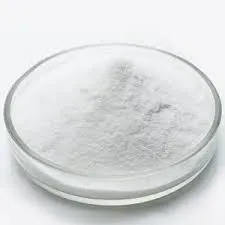
Dec . 18, 2024 11:07 Back to list
hpmc-hydroxypropyl methyl cellulose factory
The HPMC Manufacturing Process Insights into Hydroxypropyl Methyl Cellulose Production
Hydroxypropyl Methyl Cellulose (HPMC) is a versatile cellulose ether widely used across various industries, including pharmaceuticals, food, construction, and cosmetics. As a cellulose derivative, HPMC imparts unique properties such as viscosity enhancement, film-forming abilities, and improved adhesion, making it an essential ingredient in many applications. This article delves into the manufacturing process of HPMC, shedding light on its significance and the intricacies of its production in modern facilities.
The Raw Materials
The production of HPMC begins with natural cellulose, typically sourced from wood pulp or cotton. The cellulose is then subjected to a series of chemical modifications to create the desired derivatives. The key raw materials involved in the synthesis of HPMC include cellulose, propylene oxide, and methyl chloride. These ingredients are crucial for introducing hydroxypropyl and methyl groups into the cellulose polymer chain, ultimately forming HPMC.
The Production Process
1. Cellulose Preparation The initial step involves the purification of cellulose. Raw cellulose is hydrolyzed to remove impurities and to obtain a high-purity starting material. This process is critical as the quality of cellulose directly impacts the properties of the final HPMC product.
2. Alkali Treatment The purified cellulose is then treated with a strong alkali, typically sodium hydroxide (NaOH). This step, known as alkalization, leads to the formation of alkali cellulose, which is more reactive and is necessary for the subsequent etherification reactions.
3. Etherification Following alkali treatment, the alkali cellulose is reacted with propylene oxide and methyl chloride. The etherification process introduces hydroxypropyl and methyl groups into the alkali cellulose, resulting in HPMC. This stage is crucial as it allows the control of the degree of substitution (DS) of hydroxypropyl and methyl groups, determining the solubility and viscosity of the final product.
hpmc-hydroxypropyl methyl cellulose factory

4. Neutralization and Purification Once the etherification reaction is complete, the HPMC product is neutralized to remove excess alkali. This is followed by a washing process to eliminate by-products and unreacted raw materials, ensuring a high-quality end product.
5. Drying and Milling The purified HPMC solution is then subjected to drying, typically through spray drying or drum drying techniques, to achieve the desired powder form. The dried product is milled to achieve uniform particle size, which is essential for its performance in various applications.
6. Quality Control Throughout the manufacturing process, rigorous quality control measures are implemented. Samples are tested for viscosity, solubility, and other critical parameters to ensure compliance with industry standards. The final product is subjected to further testing before being packaged for distribution.
Applications of HPMC
HPMC is celebrated for its multifunctional properties. In the pharmaceutical industry, it is commonly used as a binder, film coating agent, and controlled-release agent in tablets and capsules. In food applications, HPMC serves as a thickening agent, emulsifier, and stabilizer, enhancing texture and consistency. The construction sector benefits from HPMC’s water retention properties, making it a key ingredient in mortar and concrete to improve workability and adhesion.
Conclusion
The production of Hydroxypropyl Methyl Cellulose is a complex process that showcases the intersection of chemistry and engineering. Through a meticulously controlled manufacturing process, HPMC is created as a multifunctional ingredient that supports a variety of industries. As demand for sustainable and high-performance materials rises, HPMC production techniques will likely continue to evolve, ensuring the availability of this essential compound for future applications. The growth of HPMC manufacturing facilities worldwide reflects its significant role in advancing technology and meeting modern consumers' needs.
-
Versatile Hpmc Uses in Different Industries
NewsJun.19,2025
-
Redispersible Powder's Role in Enhancing Durability of Construction Products
NewsJun.19,2025
-
Hydroxyethyl Cellulose Applications Driving Green Industrial Processes
NewsJun.19,2025
-
Exploring Different Redispersible Polymer Powder
NewsJun.19,2025
-
Choosing the Right Mortar Bonding Agent
NewsJun.19,2025
-
Applications and Significance of China Hpmc in Modern Industries
NewsJun.19,2025







